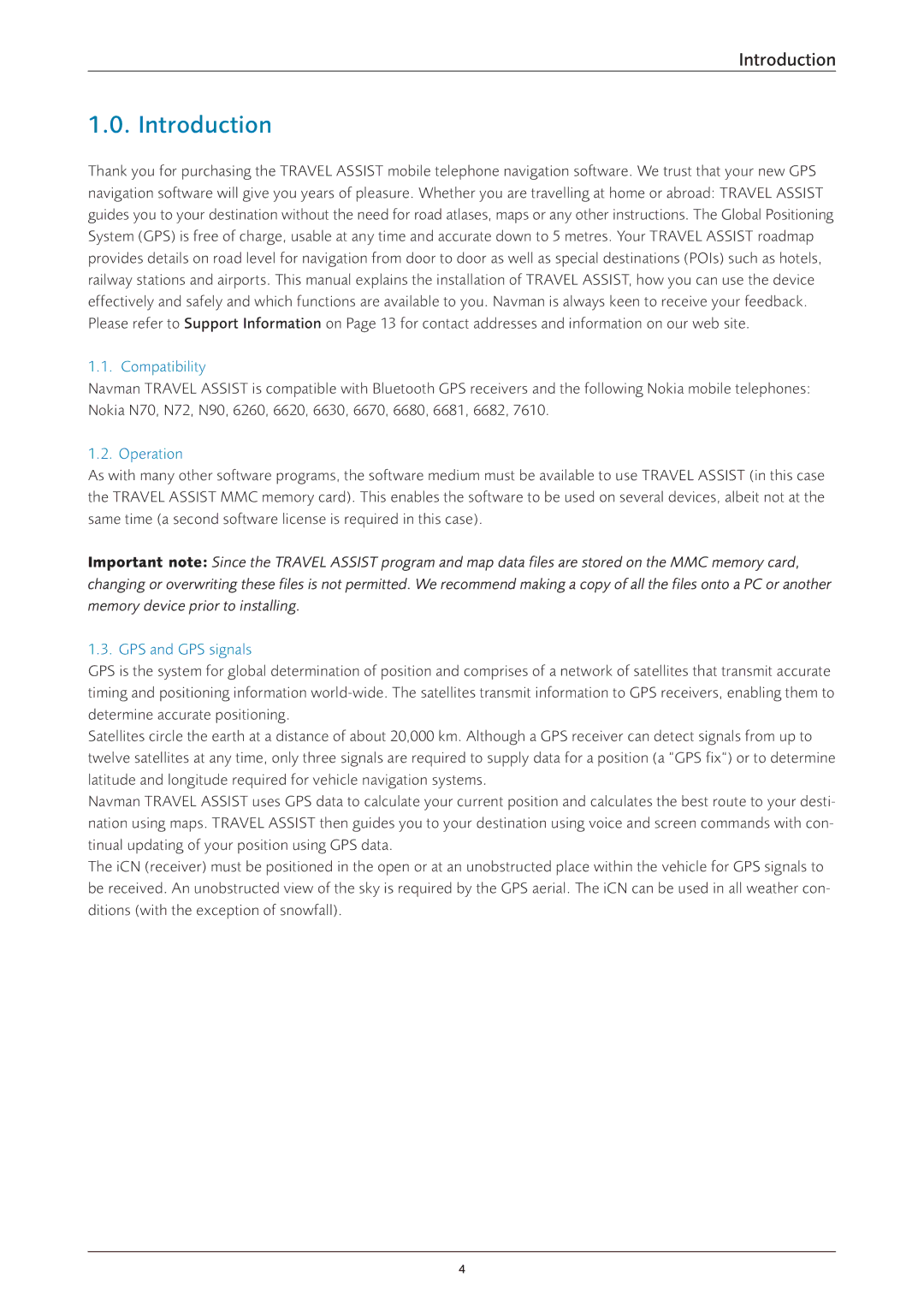
Introduction
1.0. Introduction
Thank you for purchasing the TRAVEL ASSIST mobile telephone navigation software. We trust that your new GPS navigation software will give you years of pleasure. Whether you are travelling at home or abroad: TRAVEL ASSIST guides you to your destination without the need for road atlases, maps or any other instructions. The Global Positioning System (GPS) is free of charge, usable at any time and accurate down to 5 metres. Your TRAVEL ASSIST roadmap provides details on road level for navigation from door to door as well as special destinations (POIs) such as hotels, railway stations and airports. This manual explains the installation of TRAVEL ASSIST, how you can use the device effectively and safely and which functions are available to you. Navman is always keen to receive your feedback. Please refer to Support Information on Page 13 for contact addresses and information on our web site.
1.1. Compatibility
Navman TRAVEL ASSIST is compatible with Bluetooth GPS receivers and the following Nokia mobile telephones: Nokia N70, N72, N90, 6260, 6620, 6630, 6670, 6680, 6681, 6682, 7610.
1.2. Operation
As with many other software programs, the software medium must be available to use TRAVEL ASSIST (in this case the TRAVEL ASSIST MMC memory card). This enables the software to be used on several devices, albeit not at the same time (a second software license is required in this case).
Important note: Since the TRAVEL ASSIST program and map data files are stored on the MMC memory card, changing or overwriting these files is not permitted. We recommend making a copy of all the files onto a PC or another memory device prior to installing.
1.3. GPS and GPS signals
GPS is the system for global determination of position and comprises of a network of satellites that transmit accurate timing and positioning information
Satellites circle the earth at a distance of about 20,000 km. Although a GPS receiver can detect signals from up to twelve satellites at any time, only three signals are required to supply data for a position (a “GPS fix“) or to determine latitude and longitude required for vehicle navigation systems.
Navman TRAVEL ASSIST uses GPS data to calculate your current position and calculates the best route to your desti- nation using maps. TRAVEL ASSIST then guides you to your destination using voice and screen commands with con- tinual updating of your position using GPS data.
The iCN (receiver) must be positioned in the open or at an unobstructed place within the vehicle for GPS signals to be received. An unobstructed view of the sky is required by the GPS aerial. The iCN can be used in all weather con- ditions (with the exception of snowfall).
4
